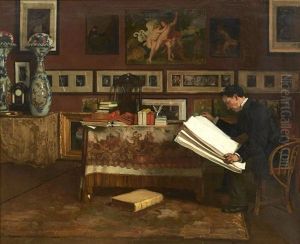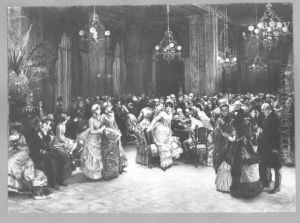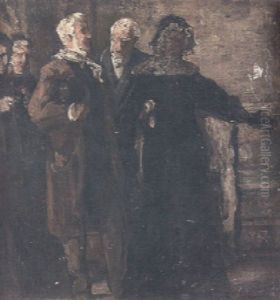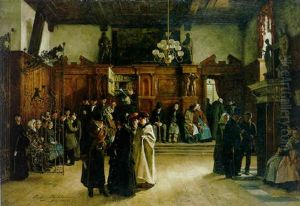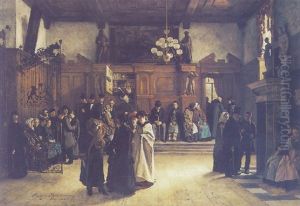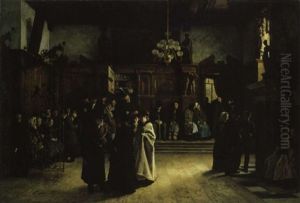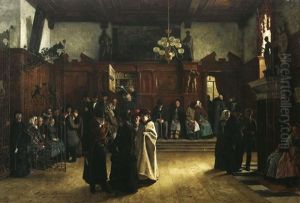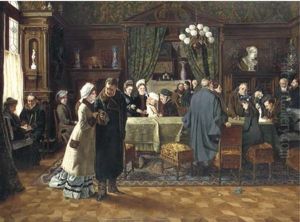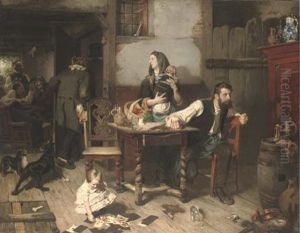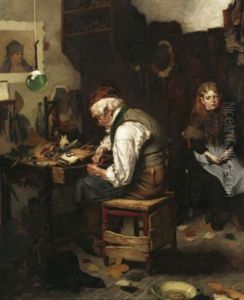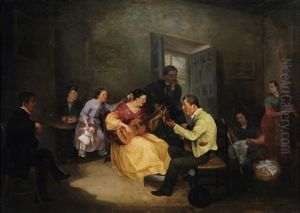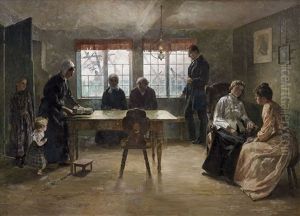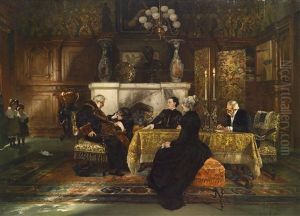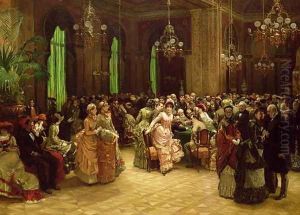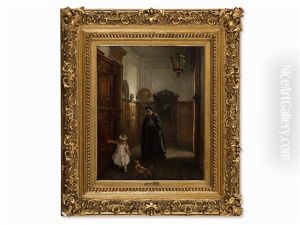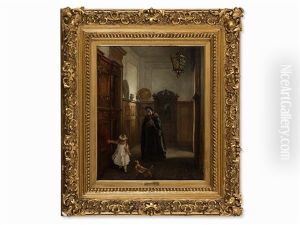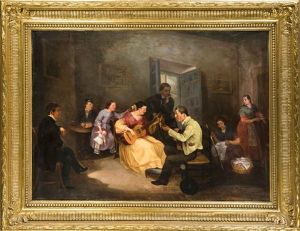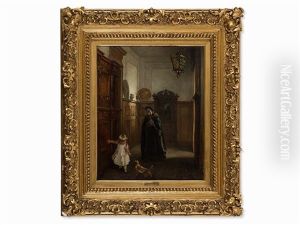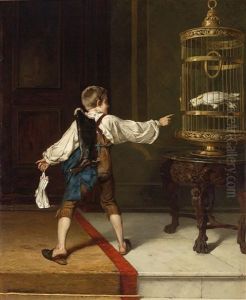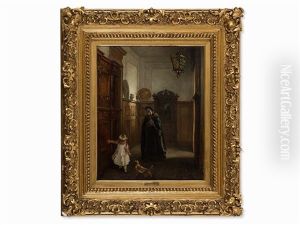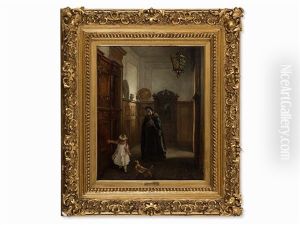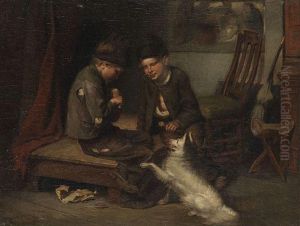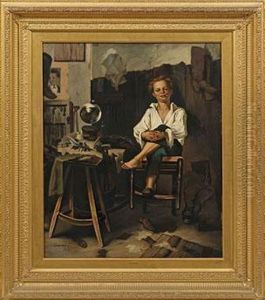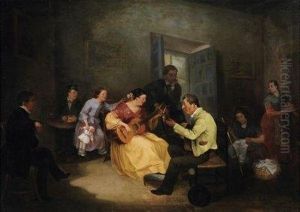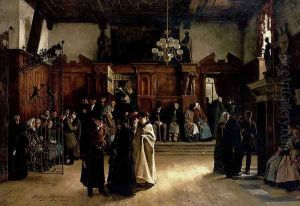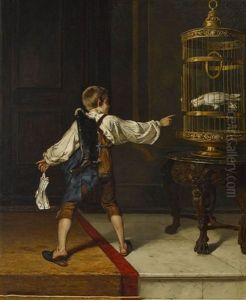Christian Ludwig Bokelmann Paintings
Christian Ludwig Bokelmann was a German painter born on June 24, 1844, in Bremen, Germany. He is known for his genre paintings, which often depicted everyday life, as well as his historical and mythological works. Bokelmann received his early education in the arts at the Düsseldorf Academy, one of the most prestigious art schools in Germany at the time, which was famous for its emphasis on detail and precision as well as its influence on the Düsseldorf school of painting.
After completing his studies, Bokelmann traveled extensively throughout Europe, which was a common practice for artists of his time to gain inspiration and exposure to different artistic styles and cultural influences. His travels took him to countries such as Italy and the Netherlands, where he studied the works of the Old Masters. These experiences had a significant impact on his artistic development, as he absorbed techniques and motifs that would later appear in his own work.
Bokelmann’s paintings typically portrayed scenes of rural and domestic life, often with a sentimental or nostalgic quality. His work was characterized by careful attention to detail, a realistic use of color, and solid composition. He was also known for his ability to capture textures and materials, such as the softness of fabric or the roughness of a farmer's hands. This meticulous approach made his genre scenes particularly vivid and engaging.
During his career, Bokelmann achieved a measure of success and was recognized by his contemporaries. He participated in various exhibitions, and his works were collected by patrons across Germany. Despite his achievements, Bokelmann's life was relatively short; he died on December 3, 1894, in Düsseldorf. His legacy lives on through his paintings, which continue to be appreciated for their portrayal of 19th-century life and their technical proficiency.
Although Bokelmann may not be as widely known today as some of his contemporaries, his contributions to genre painting of the period remain significant. His works are part of several art collections and museums, and they offer viewers a glimpse into the world of the late 19th century through the eyes of a skilled and sensitive observer.
